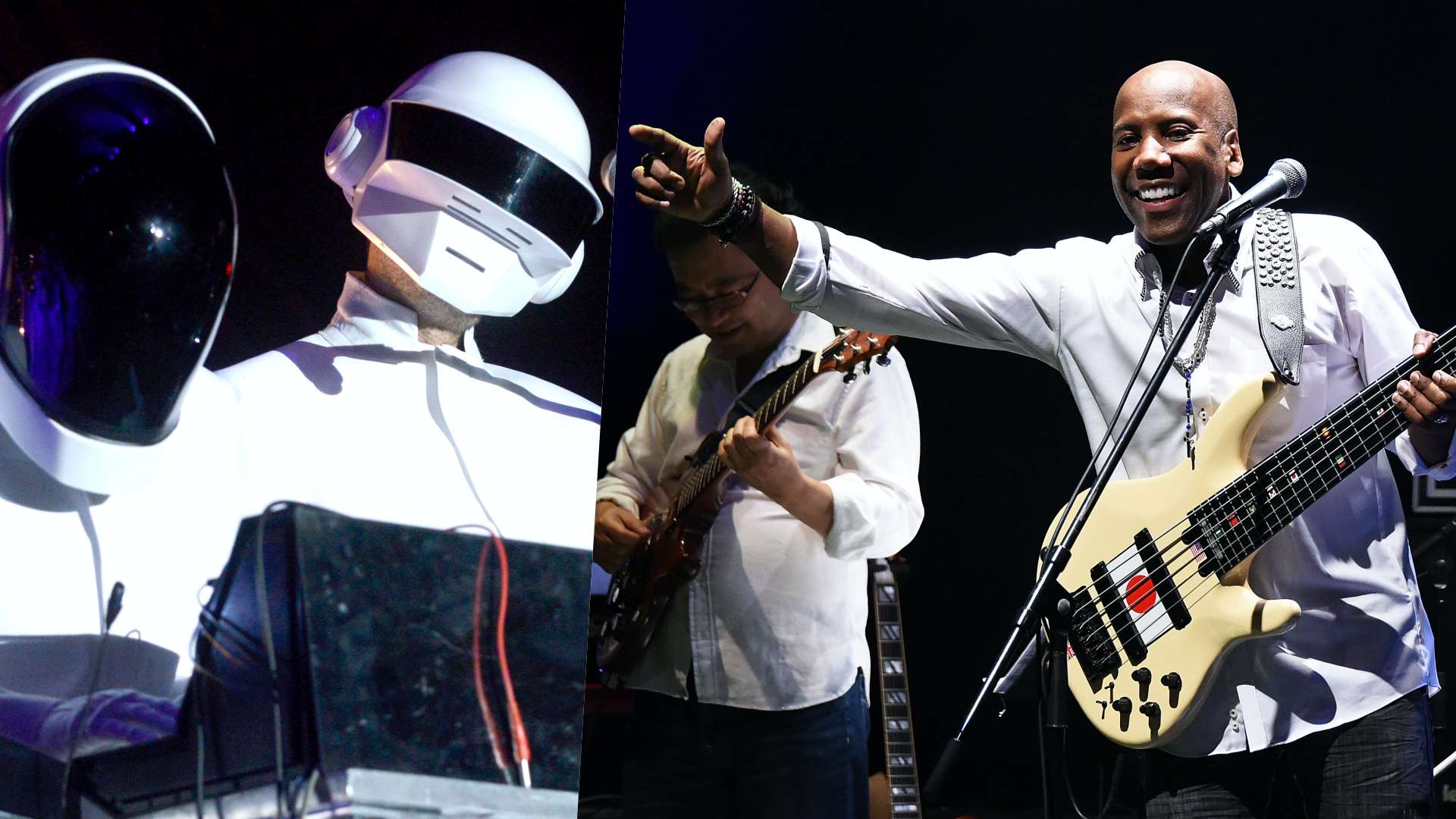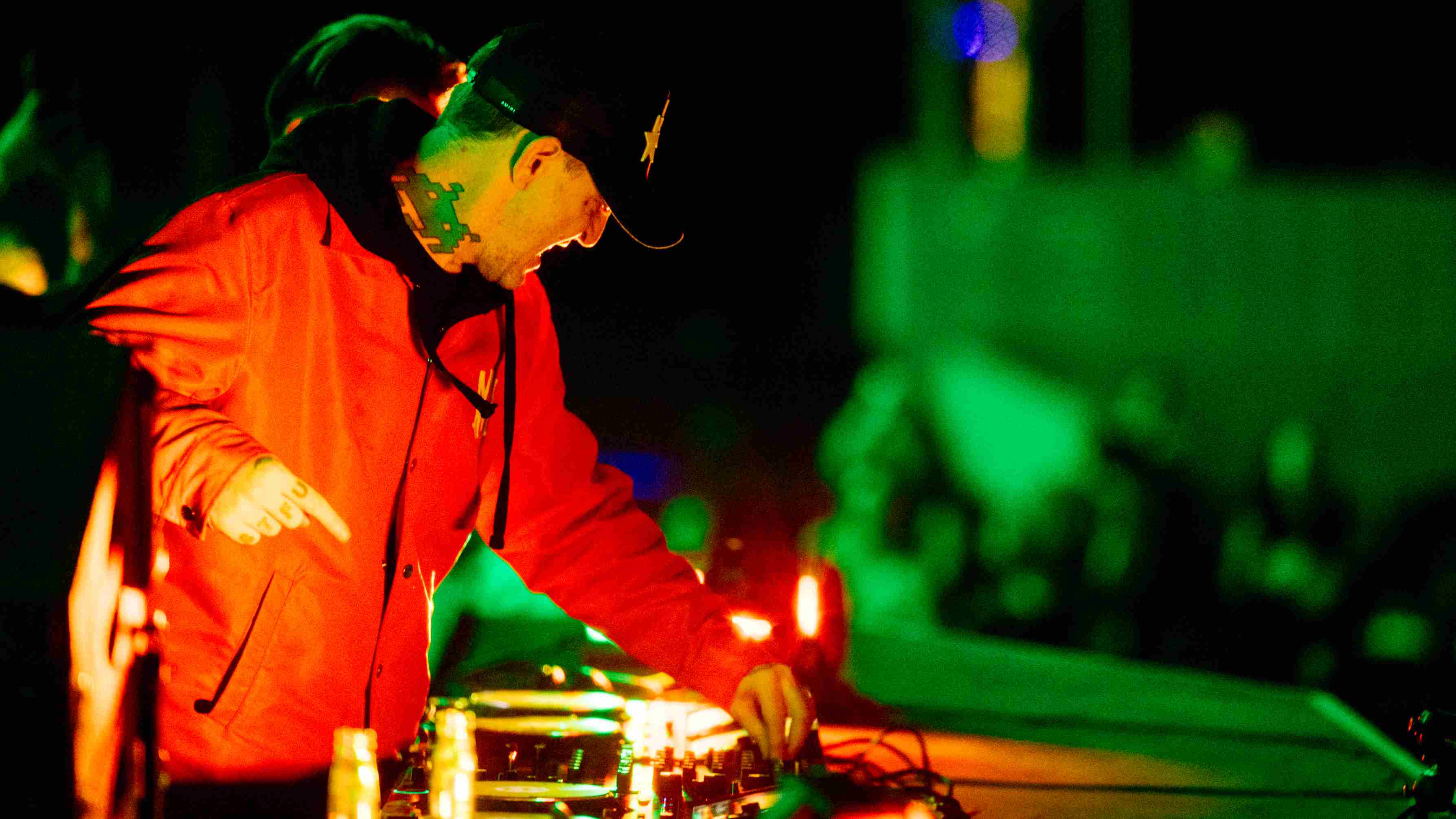“Oh, no no no! Nobody knows what we look like!”: How bass legend Nathan East almost blew Daft Punk’s cover... then "got lucky" on their biggest hit
"With the Nile thing it really had the ‘Chic’ [sound], and I wanted to do my best Bernard Edwards impersonation!"

World-famous session bassist Nathan East has just made an appearance on the Vertex Effects YouTube channel and - appropriately enough - he went in deep on some of the famous tracks that bear his trademark style and sound.
While one of the most recorded bass players ever, with hits too numerous to list, there were clearly a couple of favourites that he just had to be grilled about, not least his input into Philip Bailey and Phil Collins’ Easy Lover, from 1984.
While his contribution is no secret and clearly audible, what might not be so well known is that he was so much more than just a session player on the song. In fact, he shares a writing credit, alongside Philip Bailey and Phil Collins.
“When Phil Collins said to Philip Bailey, ‘Come to England and make the record,’ he said, ‘Can I bring Nate with me?’" East explains, setting the scene for how he and Bailey came to be together in London, with Collins in the producer’s chair.
“We were at the Townhouse Studio in Shepherds Bush, in London, and we’d already recorded two weeks of songs, but on the second-to-last day Philip said, ‘We still need one identifiable single that we could take to the label.’ So I kinda went over to the piano and wrote it in 20 minutes…
“I was thinking we need something ‘up’, something danceable, and I had that line [plays the distinctive bass riff from the chorus]. There were a lot of exercise videos out at the time and I was thinking ‘What would be a good tempo?' And Philip Bailey started singing his verse… And Phil Collins was singing ‘Choosey Lover’… We literally laid the track down about 20 minutes later. We added that intro and then we thought ‘This is a track, we’ll listen to it in the morning’.
“Meanwhile Phil Collins goes home and writes some lyrics - he writes Easy Lover. He comes back and he starts singing and I said, ‘Phil, you should do the duet with Phil. Your voice sounds great on this’ and that’s kinda how it came together.”
Get the MusicRadar Newsletter
Want all the hottest music and gear news, reviews, deals, features and more, direct to your inbox? Sign up here.
But with only a single day to go on the original planned sessions, the team had to work fast. “The demo that we made actually ended up being the record. They popped it out as the single and I remember hearing it on three radio stations at the same time! It was an exciting time.”
And how did East get that trademark sound?
“I had the prototype to my signature bass, the Yamaha BB Motion Bass,” he reveals. “And the magic box… The Yamaha NE1 Parametric Equaliser. What we did in later years was build that into my signature bass, so now if you get that it has that box built inside of it. But Yamaha no longer makes [the NE1]. So if you see any… Get it!”
East’s sound and style became so well known through the '80s and '90s that when Daft Punk went in hard for their superlative retro project Random Access Memories in 2013, there was just one bassist they wanted on board…
Let's raise the bar…
“They contacted me and said they were going for a retro thing. They had a load of old synths in the back, old Rolands… It was a time capsule, to go back to that day, that era, and it was fun!” says East, before revealing some of the more unusual aspects of Daft Punk’s time travelling experiment.
“They had five different recording setups in the studio. They had an analogue machine, they had a digital reel-to-reel, they had Pro Tools and they would record on all of those then at the end of the day they’d pick the best-sounding one,” he explains.
“We ended up being in the studio for a couple of weeks, over at Conway [Recording Studio, in Los Angeles] tracking. And we had no idea what we were tracking because there weren’t any lyrics - just these great grooves…
“We recorded Get Lucky then it went back to New York and Nile Rodgers put his part on. Pharrell did the lyrics and when I heard it again I was like, ‘Oh, wait. I’d like to have another go!’ Because with the Nile thing it really had the ‘Chic’ [sound], and I wanted to do my best Bernard Edwards impersonation!
“So they turned on the tape and Pro Tools and let it rip. We did a few takes and they had engineers that were editing things together. But after the Grammys one of the engineers said ‘We just used one take of yours - from start to finish.’ So I guess I got lucky!"
And it was certainly lucky that the elusive duo spotted East taking selfies in the studio, otherwise their legendary anonymity may have been annihilated.
“I got in trouble,” admits East. “I was snapping photos in the studio and I was about to post to Facebook and they were like ‘Oh no no no! Nobody knows what we look like!’ Just before I hit Send, they stopped me… It’s great. They can play for 45,000 people then go out in the crowd and walk home with them!”
All in all, it’s a great video, and while East also gives the inside track on Chaka Khan’s Through The Fire, Kenny Loggins' Footloose and Eric Clapton’s Change The World AND Tears In Heaven, it’s his live playalongs that really hit the spot.
Be sure to check it out.
Daniel Griffiths is a veteran journalist who has worked on some of the biggest entertainment, tech and home brands in the world. He's interviewed countless big names, and covered countless new releases in the fields of music, videogames, movies, tech, gadgets, home improvement, self build, interiors and garden design. He’s the ex-Editor of Future Music and ex-Group Editor-in-Chief of Electronic Musician, Guitarist, Guitar World, Computer Music and more. He renovates property and writes for MusicRadar.com.
“A fabulous trip through all eight songs by 24 wonderful artists and remixers... way beyond anything I could have hoped for”: Robert Smith announces new Cure remix album
“He knows what I'm thinking and feeling before I even know it": Billie Eilish suggests that she and brother Finneas can read each other's minds













